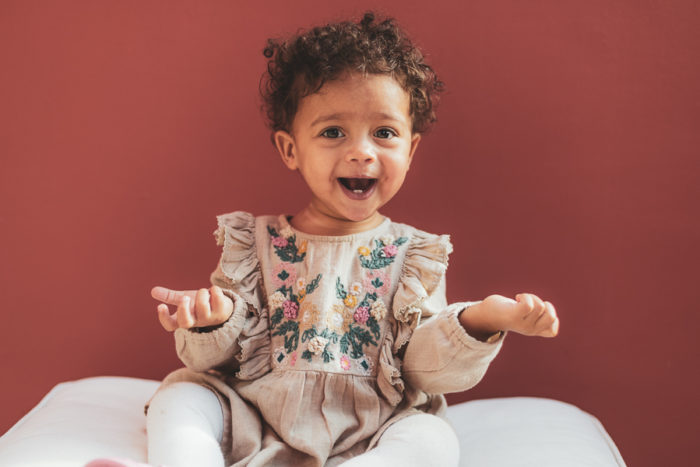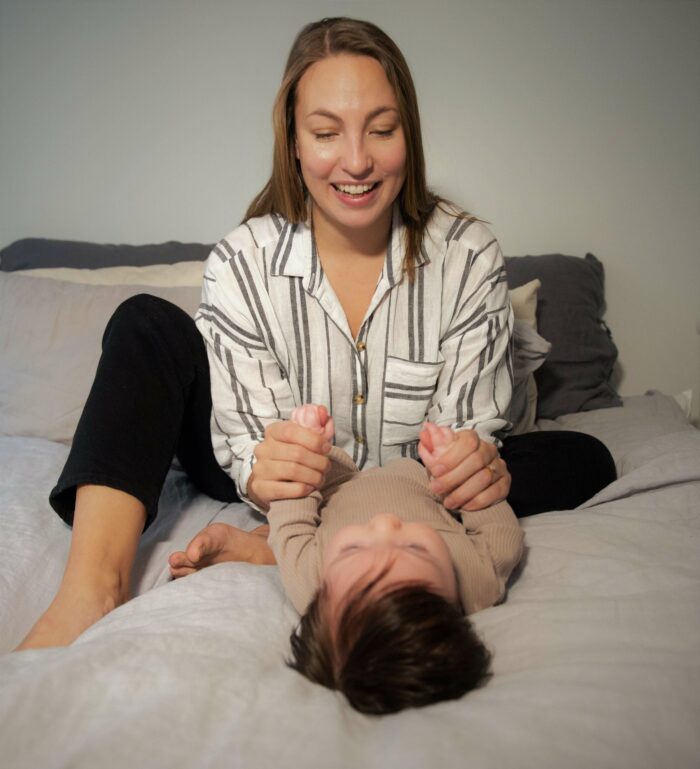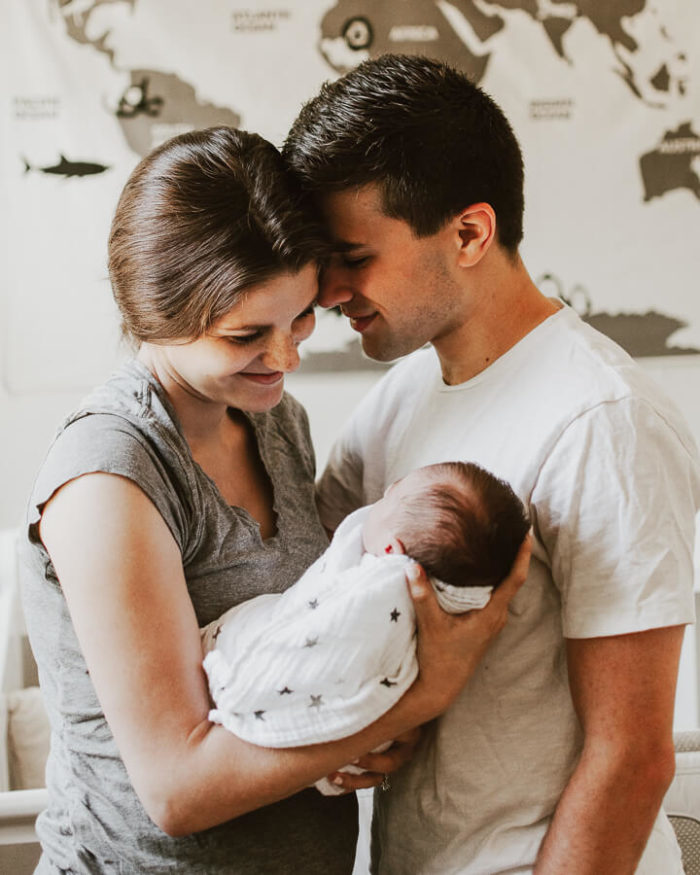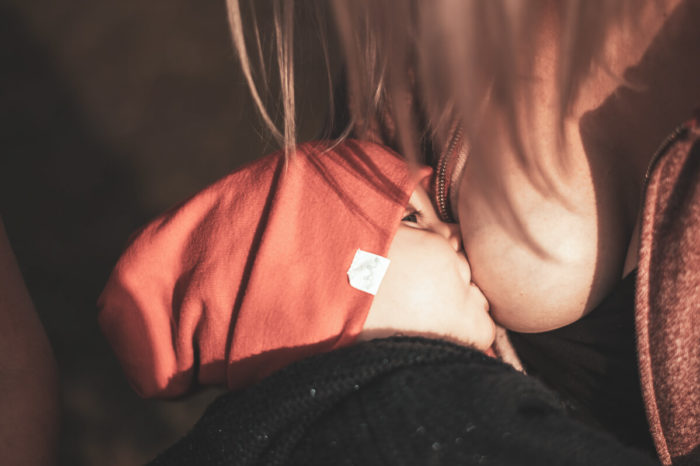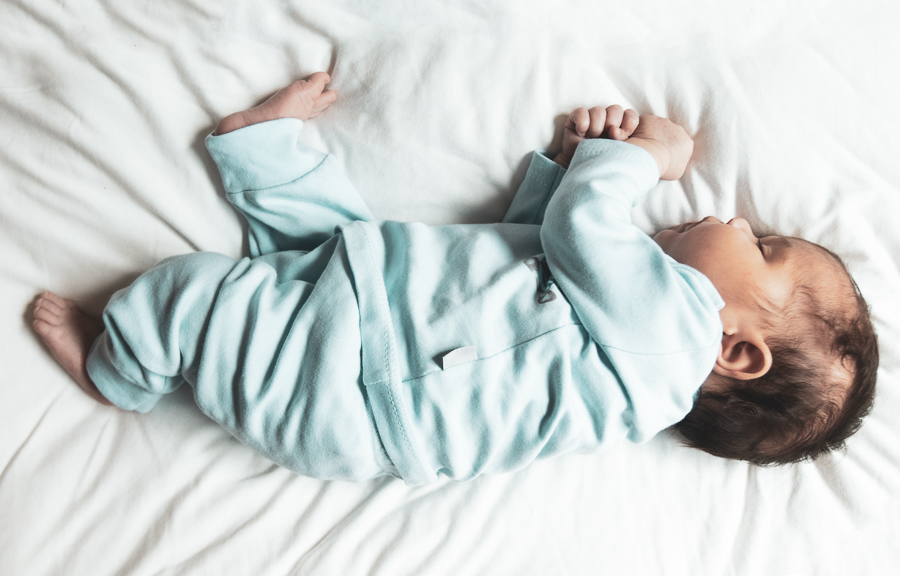
Little rompers, small sweet summer dresses, dress shirts for toddlers and babygrows for newborns – it’s so much fun to browse and buy baby clothes. The fact of the matter, however, is that children grow very quickly and you may not even have time to use some clothes before they become too small.
We’ve put together a list of three tips to help you buy baby clothes sensibly and environmentally consciously without compromising on quality or style.
1. Leave a reasonable amount of room to grow
A newborn baby weighing approx. 3.5kg and around 50cm long will usually wear size 50cm clothes. Smaller babies wear size 44cm, but it is not unheard of for newborns to wear size 56cm clothing right away. Although miniature clothes are adorable, it’s unwise to hoard too many of them, as growth spurts are very fast, and some babies may grow an entire clothing size in a week.
One rule of thumb is that if you are unsure of your baby’s size, always purchase one size larger. Clothes that are too small are unpleasant for active babies, and it’s better to leave them with some room to grow than to have the clothing become too small after just a few uses. Clothing sizes are given either in centimetres or by age (0-3 months, 3-6 months or 6 months, 9 months). The size indicates that the clothing will fit the child until they reach the maximum size or age given.
Clothes that are too small are unpleasant for active babies, and it’s better to leave them with some room to grow than to have the clothing become too small after just a few uses.
Baby shoes should be purchased together with a skilled shoe sales assistant, as children are not necessarily able to communicate whether a shoe fits correctly. You should leave a finger’s width of space to grow in the shoe, but no more, as loose shoes are unpleasant for active toddlers. The shape of a child’s foot is individual to the child, so pay attention to the shape of the shoe and sole.
2. Recycle and optimize your clothing purchases
High-quality baby clothing can withstand heavy use and washing, so it should always be either recycled among your friends or sold at a flea market. If there are several children in a family, particular attention should be paid to the quality and materials. Good-quality natural materials, such as cotton and wool, are very durable, and classic colours are an excellent choice for both boys and girls. Check the seams to make sure that they are not twisted or beginning to unravel. If the fabric already looks pilled in the store, it will not be able to withstand repeated washing.
Check the seams to make sure that they are not twisted or beginning to unravel.
Many parents choose to buy brand new children’s underwear, swimwear, and shoes and outdoor clothing that will be subject to heavy wear. Most used clothes are regular everyday clothes, outgrown occasion wear, and clothing for hobbies. Recycling and repairing clothing are environmentally friendly options for children’s clothing, as style is not dependent on disposable fashion.
3. Only buy what you need and favour Finnish
It’s easy to be swept away in the minifashion and twinning trend – matching outfits for twins in the latest design look adorable, but can you really justify buying another tricot top for the overflowing closet? Always buy what you genuinely need; check online flea markets and ask your friends if they have any clothes to spare. A two-for-one offer becomes less attractive if the second garment is never used and if a discounted coat bought for next winter already fits in July.
Finnish children’s clothing brands have made their mark in recent years, and alongside traditional classics, new brands have also popped up. Always compare the alternatives and favour Finnish brands.
Before you make your final purchasing decision, consider the following
- Buy clothes that are genuinely enjoyable for your child: easy to put on and take off, weather-appropriate material and age-appropriate clothes. A baby lying on their back does not need a crumpled hood underneath their head, and a diaper needs to fit comfortable under little trousers.
- Check the clothing material and favour environmentally friendly options, such as organic cotton and Finnish wool, and favour clothes that are produced in an ethical and eco-friendly way.
- Don’t forget to check the washing instructions. Baby clothing should be washed before use, as it may contain residue of chemicals from the manufacturing process which may irritate a baby’s sensitive skin. Favour clothing that can be washed at 60 degrees. At higher temperatures, even stubborn stains are easily removed.

